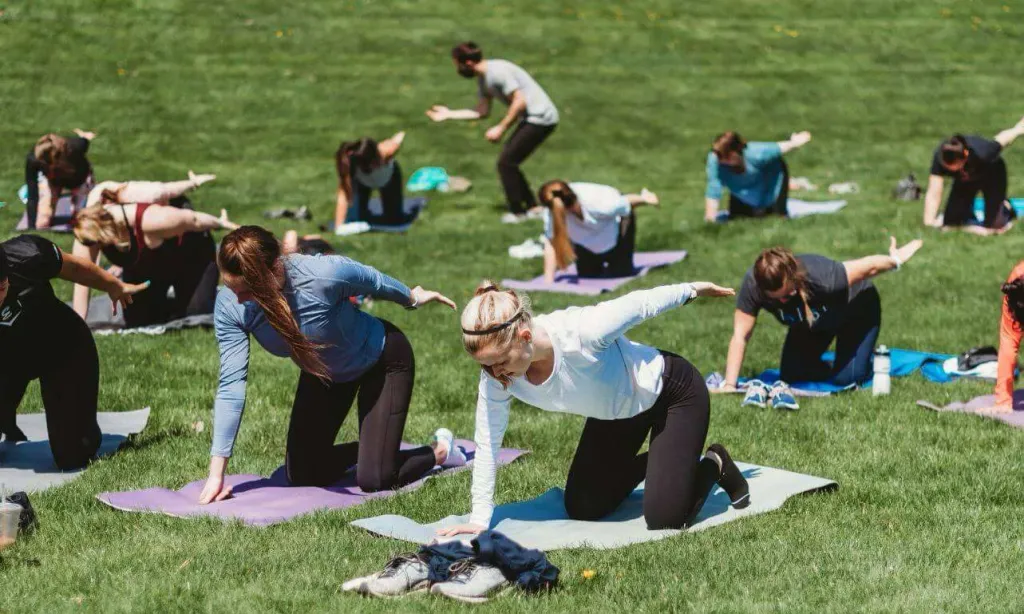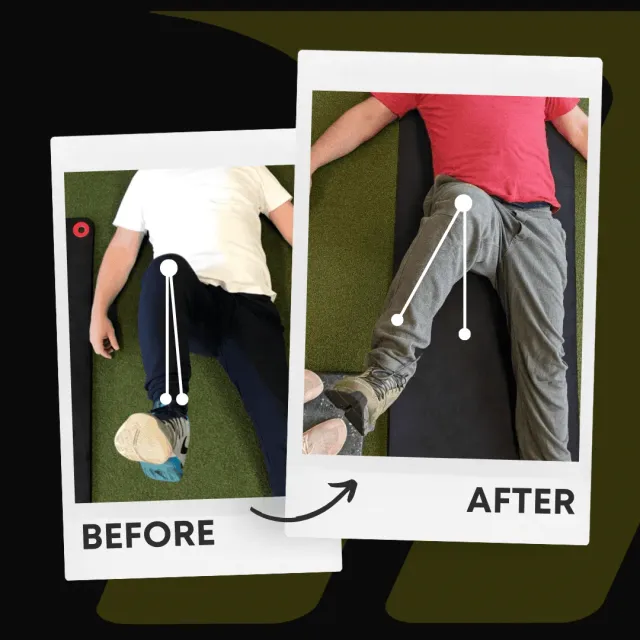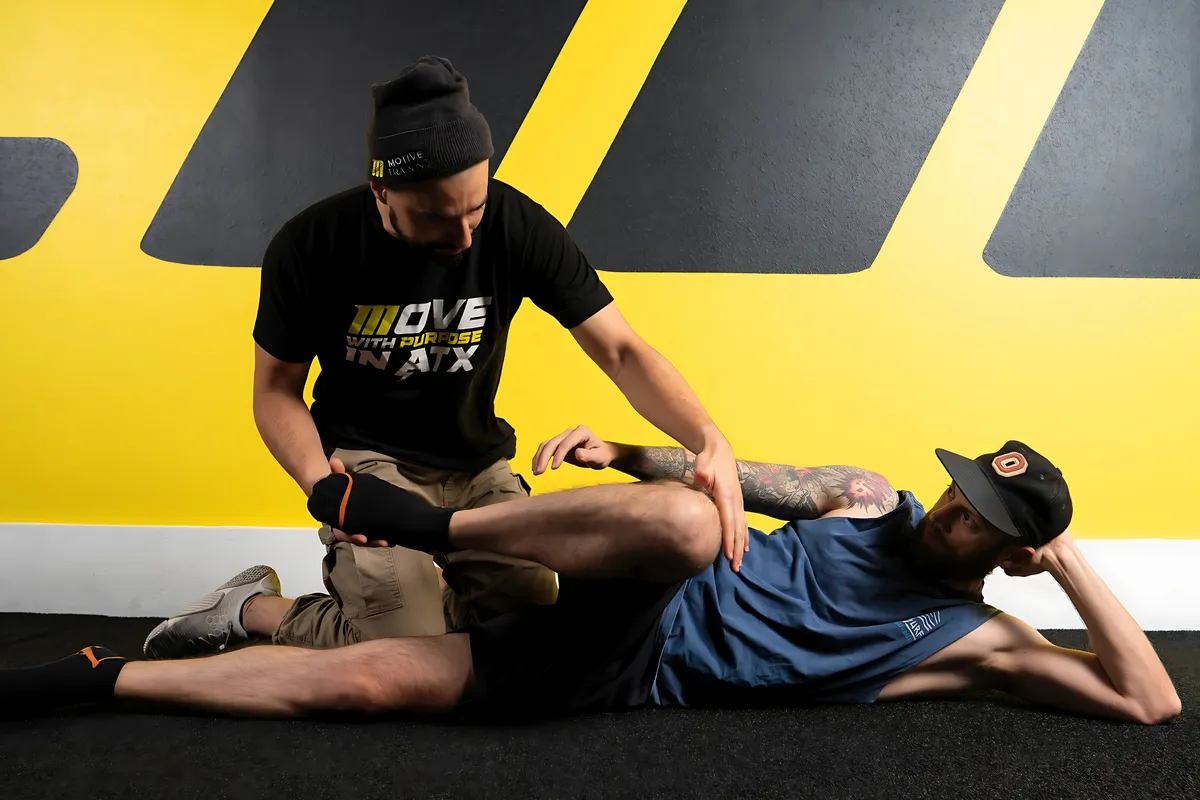Why Wrist Flexion Matters (And What You Can Do About It)
August 2, 2023 | Stretching

If you’ve ever typed on a keyboard, pushed a sled, gripped a kettlebell, or played a game of pickleball, you’ve relied on wrist flexion to get the job done. But most people don’t think about how their wrists move—until they can’t.
That’s when problems start.
Wrist flexion plays a critical role in joint health, athletic performance, and daily function. When that motion becomes restricted or painful, it doesn’t just affect your workouts—it limits how you move through life.
Let’s break down why wrist flexion matters, what causes issues, and how you can start rebuilding better movement from the inside out.
What Is Wrist Flexion?
Wrist flexion is the act of bending your hand down at the wrist, bringing the palm closer to the underside of the forearm. This motion is controlled by your wrist flexor muscles—primarily the flexor carpi radialis, flexor carpi ulnaris, and palmaris longus—along with a supporting cast of tendons and connective tissue.
Its opposite wrist extension moves your hand upward, with your palm facing away from the forearm. Both directions are essential for full wrist function.
And like all joints, the wrist doesn’t operate in isolation. Limitations in wrist flexion often become apparent during loaded movements, such as push-ups, front squats, or hand-supported mobility exercises. Without adequate range and control, you may start to feel strain, compression, or even pain.
If you want to dive deeper into why joint rotation and end-range strength matter, check out this article on Controlled Articular Rotations (CARs).
Why Wrist Flexion Matters for Daily Life
It’s easy to underestimate how often your wrists flex during day-to-day movement:
- Typing and using a mouse
- Carrying groceries
- Performing push-ups or pressing movements
- Using your phone (scrolling, texting, gripping)
- Playing sports like tennis or pickleball
Healthy wrist flexion allows you to absorb and transmit force, stabilize your upper body, and adapt to different grips and hand positions. If you lose that ability—or if you start developing pain—those everyday motions can become a problem fast.
And if you’re lifting weights, working a desk job, or training with any kind of load, wrist flexion issues can creep up quickly.
Common Causes of Wrist Flexion Pain
Wrist pain can stem from a variety of causes, but when it comes to flexion-specific issues, here are a few of the most common culprits:
- Overuse from repetitive tasks (e.g., typing, barbell training, racquet sports).
- Tendon pathologies like tendinitis or tenosynovitis.
- Compression or impingement when the joint lacks adequate workspace.
- Structural conditions like arthritis, carpal tunnel, or ganglion cysts.
- Previous trauma, like falling on an outstretched hand or wrist sprain.
Before jumping into mobility work, it’s important to rule out red flags. If your pain is sharp, persistent, or worsening, it’s always a good idea to consult a medical professional or undergo a proper assessment.
How We Assess Wrist Flexion (and Why It’s Different)
At Motive Training, we use the Functional Range Assessment to evaluate joint function, including the wrist. Instead of guessing, we break down your active and passive ranges of motion, identify restrictions, and test how much workspace your wrist actually has.
This gives us a clear direction—so you’re not just stretching randomly or masking symptoms if you’re looking for a non-invasive way to understand your wrist pain or limitations, schedule a mobility assessment with us in South Austin.
How To Improve Wrist Flexion
Improving wrist flexion isn’t about yanking your hand into a deeper stretch. It’s about restoring control, developing strength at your end ranges, and gradually expanding what your wrist can handle.
Here’s where we start:
1. Stretch the Wrist Flexors—The Right Way
A simple kneeling wrist extension stretch (palm down, fingers facing your knees) can be a great entry point. But you don’t want to passively hang out there. Try adding gentle isometrics—pressing your fingers into the floor without moving—for added tissue activation.
Want to see it in action? Check out our YouTube breakdown, and make sure to subscribe for more joint-specific mobility tips.
2. Train End-Range Strength
Once you’ve opened up some range, it’s time to strengthen it. We use Passive Range Holds, isometrics that challenge your ability to hold position at the end of your current range of motion.
This helps build resilience and prevents your body from reverting back to its old limitations.
3. Integrate Wrist Flexion into Larger Patterns
The goal isn’t just more wrist motion—it’s better movement overall. That means integrating improved wrist flexion into your lifting, sport, and daily life. This is especially important if you’re dealing with limited scapular motion or elbow pain, which often shows up when the wrist can’t do its job.
When to Seek Help
If wrist pain is limiting your training or daily life, don’t wait it out. Pain that persists often points to a deeper issue—not just tight muscles, but a lack of joint control or inadequate workspace.
Our team specializes in mobility coaching in Austin, TX, and can help you develop a plan that restores wrist function without relying on quick fixes or cookie-cutter protocols.
You don’t need to rely on ice packs, wrist braces, or Google searches. You need a system built around how your joints actually move.
Final Thoughts
Wrist flexion isn’t just a technical term—it’s a crucial piece of how you move, lift, and live. When you lose it, everything else starts to compensate.
By addressing the joint itself, building end-range strength, and learning how to move with purpose, you can create lasting change—starting at the wrist and extending through the rest of your body.
Written by
Brian Murray, FRA, FRSC
Founder of Motive Training
We’ll teach you how to move with purpose so you can lead a healthy, strong, and pain-free life. Our headquarters are in Austin, TX, but you can work with us online by signing up for KINSTRETCH Online or digging deep into one of our Motive Mobility Blueprints.

